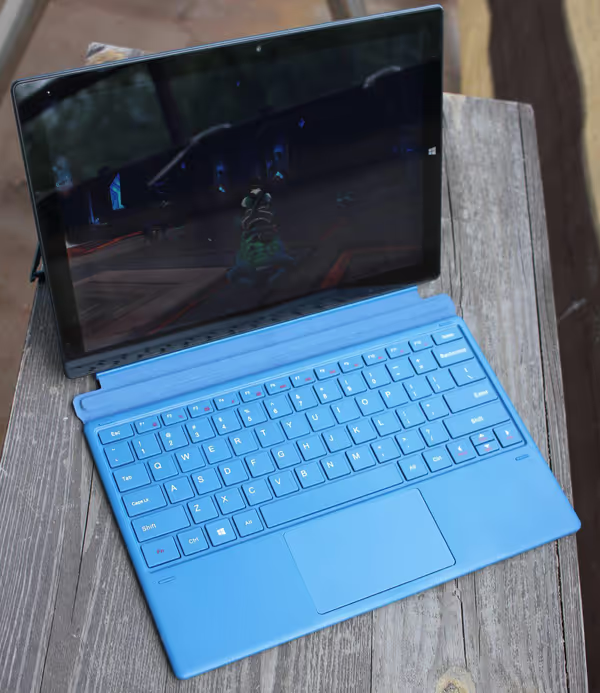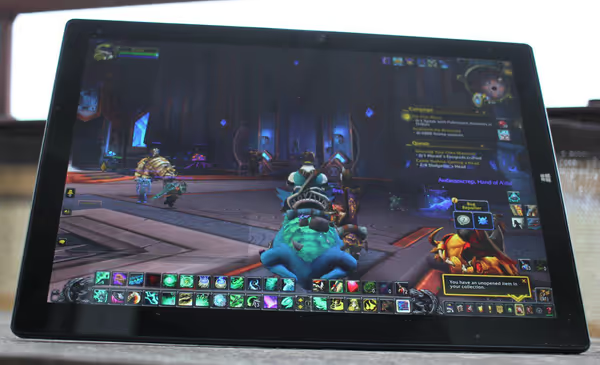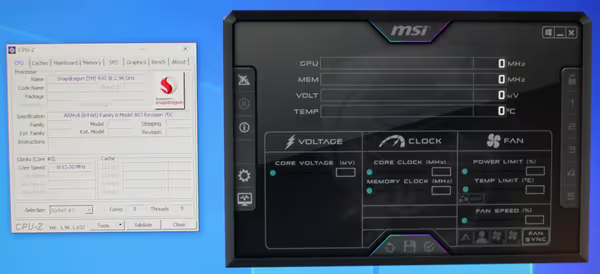Testing out World of Warcraft natively on Windows 10 ARM
Windows on Qualcomm Snapdragon ARM SoCs is still a niche in the Microsoft ecosystem. Blizzard during patch 9.1 development released an initial ARM Windows version of World of Warcraft, likely as a followup to their Apple M1 ARM version. Let see how it performs on one of the cheapest Windows ARM devices - Pipo W12.
Windows on ARM
There are few Windows ARM devices available right now on the market - mostly tablets or ultra thin laptops, all equipped with a Qualcomm Snapdragon chip. They run an ARM native version of Windows and they can run ARM native Windows app as well as emulate 32-bit x86 apps. Support for 64 bit x86 emulation is in the works. As there is a limited set of ARM native Windows applications the major problem this niche faces is app availability. Running existing apps through emulation is only a fractional solution as there is a performance penalty to this and chips used in those devices aren't anything close to being top performers.
Due to low power usage of the chips we get a fanless, passively cooled ultrabooks or tablets. On top of that the chips are equipped with a cellular modem allowing for Internet access over 4G/5G/LTE cellular networks. At the time of writing this article Windows ARM devices are just ultra low power portable and always-connected, always-on devices. This isn't a direct competition to Apple M1 or any of the modern Intel/AMD CPUs (in terms of performance and overall value).


Pipo W12 and other Windows 10 ARM devices
Pipo W12 is a Chinese tablet with a detachable keyboard that is equipped with Snapdragon 850, 8GB of RAM and 256 or 128GB of eMMC storage. Without the keyboard the tablet weights only around 800 grams. With 3:2 2880x1920 display it's clearly a device for content consumption and light productivity on the go.
Snapdragon 850 is just a better bin of Snapdragon 845 which is a smartphone chip. It offers 4 performance and 4 power saving cores on the CPU as well as Adreno 630 integrated graphics. It's made on TSMC 10nm LPP process. Nowadays this is bit dated and there are other Windows ARM devices with newer chips.
Pipo W12 costs around 420 EUR. Starting from around whooping 1700 EUR we can have Microsoft Surface Pro X with Microsoft SQ2 and SQ1 chips. Those chips are branded and better binned versions of Snapdragon 8cx. This chip is made on newer TSMC 7nm node, yet in terms of raw performance is still behind anything modern from AMD, Intel or Apple. It has low power usage so it's very good at the tablet form factors it's put in.
Lenovo also offers few models with Snapdragon chips, taunting 2 days of use without charging. Samsung released a somewhat cheap Galaxy Book Go with Snapdragon 7c. Overall availability of Windows ARM devices is low and the prices for the most part are extremely high limiting any wider adoption of the ARM Windows. It's a very specific device type fitting only few specific niches.
As a quick overview I tested Pipo W12 using Geekbench 5 which has a native AARCH64 version and browser base Basemark. Those synthetic benchmarks aren't directly representative or real world peformance, yet they do allow us to get some context on where the performance level is:

The Celeron N4100 was running in BMAX Y11 - a cheap fanless laptop that does limit it performance a bit. Ryzen 4800U was in Lenovo IdeaPad 5 14ARE05.
World of Warcraft on ARM
Blizzard was quick to release a native version of WoW for Apple M1. First it was their retail version but later also the Classic TBC version as well. Surprisingly during retail patch 9.1 development Blizzard made a blue post about inititial release of their Windows AARCH64 version (64-bit ARM). As the Windows ARM userbase is super low the news didn't get that much traction.
I've tested the PTR version but when 9.1 goes live you should be able to just install WoW retail and play without any magical options. Note that Classic client currently is not compatible with Windows ARM devices (as they can't emulate 64-bit x86 code).

Benchmarking Windows 10 ARM
The problem with Windows on ARM is that a lot of tools and benchmark apps is not available for this architecture. CapFrameX does not work, MSI Afterburner launches but doesn't do anything aside of that. GPU-Z won't work, while CPU-Z barely works and barely shows anything. There are some native synthetic benchmarks but that's about it.
I could not get any good benchmarking data on this platform so I just collected a set of average FPS from WoW itself. This doesn't show full story - no frametime charts, no 1% low FPS showcasing gameplay fluidity - yet it allows us to place Snapdragon 850 on a chart with existing CPUs from Intel, AMD and Apple.
It's kind of obvious that latest low power Intel and AMD chips will annihilate Snapdragons in terms of performance yet we are talking here about a lightweight tablet with built in cellular connectivity which is something that may be very appealing to specific audience.

World of Warcraft on Windows 10 ARM
I've used the version 9.1.0 39069 on the PTR for the testing and benchmarks. The game was set to 1080p, mode 2 (low). The game run without major problems. It crashed only once in Legion Dalaran when the Windows considered it not responding and closed it (it wasn't a typical WoW crash with WoW crash submit window). During testing in Oribos stutter showed up and this could be related to insufficient amount of RAM as on x86 my 8GB test systems did struggle with Oribos.
In other regions the FPS was around 20 FPS (or lower). Not great but usually playable. You won't mythic-race on such device but aside of that it should be fine-ish for light gameplay, farming.
WoW recommended 1080p mode 2 for Pipo W12. At such settings the performance isn't great. It's playable but the experience is on the edge of unplayable. In older zones, simpler scenes it manages but when you play you can feel it's not smooth. Aside of Oribos there was no stutter so at least that's not a problem during gameplay overall:

Lowering the resolution to 1280x853 and mode 1 (lowest settings) I got some data to compare against low tier Intel parts I benchmarked previously:

Here we can see that Qualcomm Adreno 630 integrated graphics performs similarly to Intel HD Graphics 5500 from 2015. Single core performance is low which is highlighted by the combat benchmark.




Newer Snapdragons used in current Windows 10 ARM devices offer better iGPU and somewhat better CPU so you should see better performance, but money/value-wise devices like Microsoft Surface Pro X aren't worth the price tag to play WoW on the go if you can settle for say a 13,3" or bit bigger lightweight laptop powered by Intel 1165G7 or AMD 4800U/5800U. Pipo W12 price could be matched by Intel i5-1135G7 or lower tier Ryzen parts (4600U or alike). This does not mean matching the tablet form factor and likely barely life as well.
From the technical side it's interesting to see so quick WoW port to ARM. Blizzard did not disclose any details on how this was done - how much if at all the Apple M1 port helped them etc.
Qualcomm did acquire Nuvia and is working on high performance ARM chips so we may see something much better than SQ2/Snapdragon 8cx but I doubt we will see them going as aggressively as Apple and then even if they match M1 in like 2022-23 this will still be a Windows device where you very likely won't be able to change and upgrade storage, RAM, freely reinstall or change operating system and so on. Emulation of older/existing games/apps will incur that emulation penalty and potentially fail. Qualcomm is also known for their high prices so it's possible their next big thing will cost twice as much as an RTX-equipped gaming laptop and even more than an Intel or AMD ultrabook - and those two companies aren't sleeping as well. Samsung also could be mentioned as they are making their new Exynos chips with AMD RDNA2 graphics which is expected to be vastly superior over stock ARM Mali integrated graphics (and Adreno as well - but benchmarks will tell).
Comment article